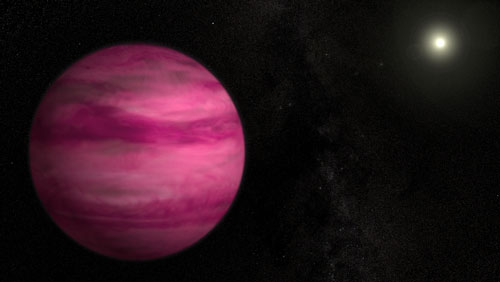 Using infrared data from the Subaru Telescope in Hawaii, an international team of astronomers has imaged a giant planet around the bright star GJ 504. Several times the mass of Jupiter and similar in size, the new world, dubbed GJ 504b, is the lowest-mass planet ever detected around a star like the sun using direct imaging techniques.
Using infrared data from the Subaru Telescope in Hawaii, an international team of astronomers has imaged a giant planet around the bright star GJ 504. Several times the mass of Jupiter and similar in size, the new world, dubbed GJ 504b, is the lowest-mass planet ever detected around a star like the sun using direct imaging techniques.
Aug 5th, 2013
Read more
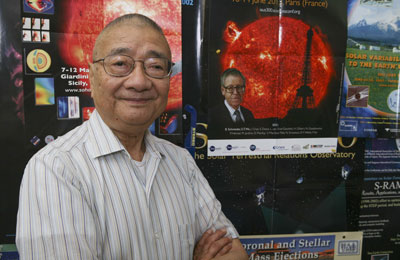 Three new solar modeling developments at The University of Alabama in Huntsville (UAH) are bringing scientists closer to being able to predict the occurrence and timing of coronal mass ejections from the sun.
Three new solar modeling developments at The University of Alabama in Huntsville (UAH) are bringing scientists closer to being able to predict the occurrence and timing of coronal mass ejections from the sun.
Aug 5th, 2013
Read more
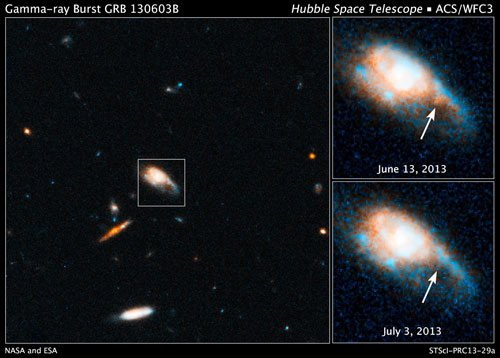 Probing the location of a recent short-duration gamma-ray burst in near-infrared light, astronomers using the Hubble Space Telescope found the fading fireball produced in the aftermath of the blast. The afterglow reveals for the first time a new kind of stellar blast called a kilonova.
Probing the location of a recent short-duration gamma-ray burst in near-infrared light, astronomers using the Hubble Space Telescope found the fading fireball produced in the aftermath of the blast. The afterglow reveals for the first time a new kind of stellar blast called a kilonova.
Aug 3rd, 2013
Read more
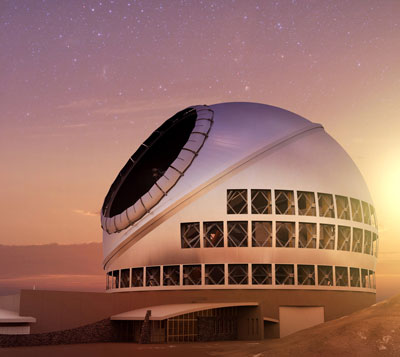 With the signing last week of a 'master agreement' for the Thirty Meter Telescope - destined to be the most advanced and powerful optical telescope in the world - the University of California and UCLA moved a step closer to peering deeper into the cosmos than ever before.
With the signing last week of a 'master agreement' for the Thirty Meter Telescope - destined to be the most advanced and powerful optical telescope in the world - the University of California and UCLA moved a step closer to peering deeper into the cosmos than ever before.
Aug 3rd, 2013
Read more
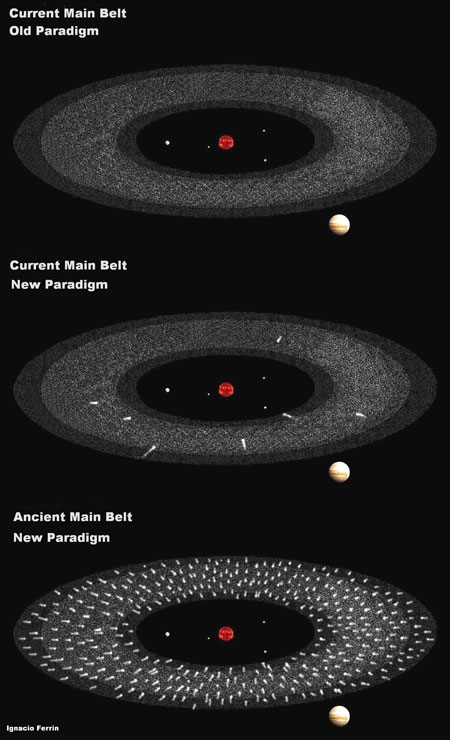 Astronomers have discovered a graveyard of comets. The researchers describe how some of these objects, inactive for millions of years, have returned to life leading them to name the group the 'Lazarus comets'.
Astronomers have discovered a graveyard of comets. The researchers describe how some of these objects, inactive for millions of years, have returned to life leading them to name the group the 'Lazarus comets'.
Aug 2nd, 2013
Read more
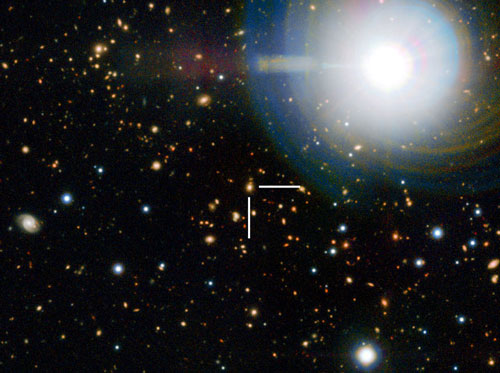 On average, galaxies that no longer form stars are larger today than they were several billion years ago. However, this has nothing to do with individual galaxies merging with others, as was long thought to be the case, concludes ETH-Zurich professor Marcella Carollo after evaluating data from the Hubble Space Telescope.
On average, galaxies that no longer form stars are larger today than they were several billion years ago. However, this has nothing to do with individual galaxies merging with others, as was long thought to be the case, concludes ETH-Zurich professor Marcella Carollo after evaluating data from the Hubble Space Telescope.
Aug 2nd, 2013
Read more
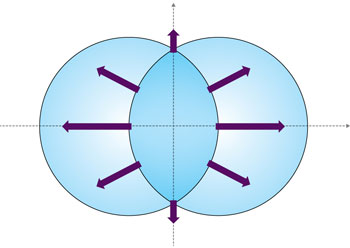 A predicted experimental test will clarify how light interacts with matter at high energies.
A predicted experimental test will clarify how light interacts with matter at high energies.
Aug 2nd, 2013
Read more
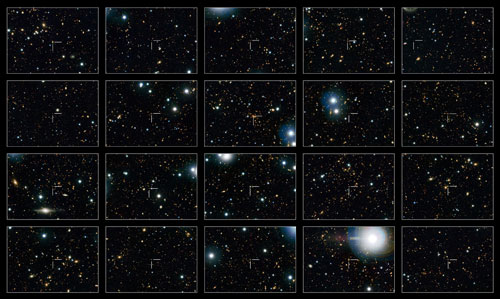 Hubble's COSMOS survey solves 'quenched' galaxy mystery.
Hubble's COSMOS survey solves 'quenched' galaxy mystery.
Aug 1st, 2013
Read more
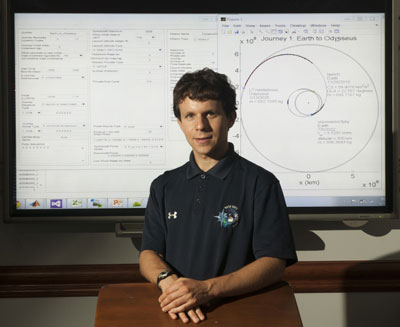 A NASA technologist has developed a fully automated tool that gives mission planners a preliminary set of detailed directions for efficiently steering a spacecraft to hard-to-reach interplanetary destinations, such as Mercury, Jupiter, Saturn, and most comets and asteroids.
A NASA technologist has developed a fully automated tool that gives mission planners a preliminary set of detailed directions for efficiently steering a spacecraft to hard-to-reach interplanetary destinations, such as Mercury, Jupiter, Saturn, and most comets and asteroids.
Aug 1st, 2013
Read more
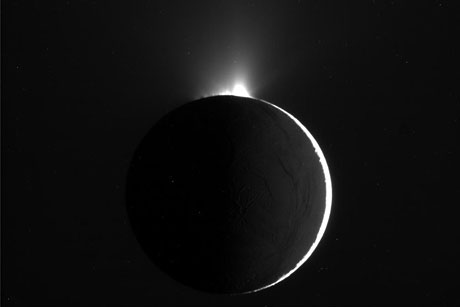 Using Cassini data, astronomers have determined that the amount of water vapor and ice erupting from Enceladus depends on tidal forces from Saturn - the same phenomenon that creates tides on Earth.
Using Cassini data, astronomers have determined that the amount of water vapor and ice erupting from Enceladus depends on tidal forces from Saturn - the same phenomenon that creates tides on Earth.
Jul 31st, 2013
Read more
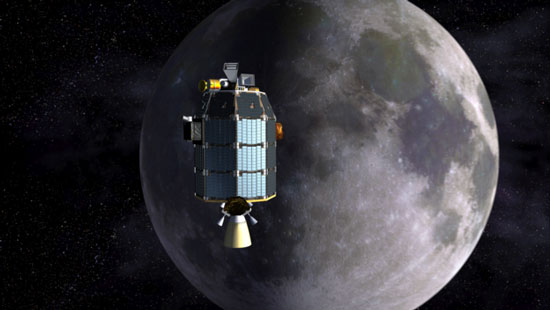 An advanced laser system offering vastly faster data speeds is now ready for linking with spacecraft beyond our planet following a series of crucial ground tests. Later this year, ESA's observatory in Spain will use the laser to communicate with a NASA Moon orbiter.
An advanced laser system offering vastly faster data speeds is now ready for linking with spacecraft beyond our planet following a series of crucial ground tests. Later this year, ESA's observatory in Spain will use the laser to communicate with a NASA Moon orbiter.
Jul 30th, 2013
Read more
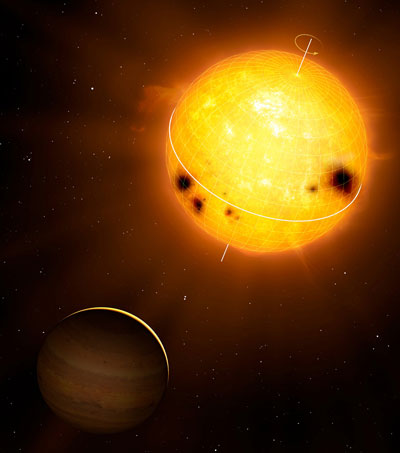 With the help of asteroseismic data obtained by the CoRoT space telescope, scientists were able to determine the interior rotation of a Sun-like star - and characterise an exoplanet.
With the help of asteroseismic data obtained by the CoRoT space telescope, scientists were able to determine the interior rotation of a Sun-like star - and characterise an exoplanet.
Jul 30th, 2013
Read more
In the science fiction show, Star Trek, teleportation is a regular and significant feature. But how much time and power is required to send the data needed to teleport a human being? University of Leicester physics students have calculated the answer to this very question.
Jul 30th, 2013
Read more
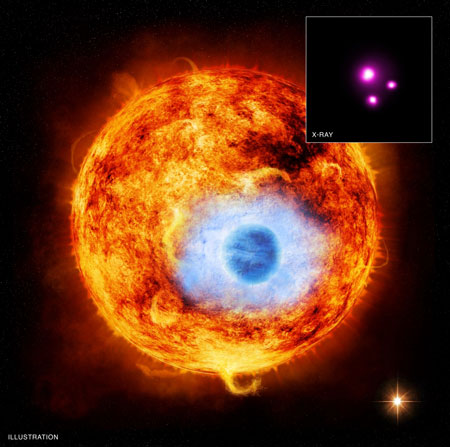 For the first time since exoplanets, or planets around stars other than the sun, were discovered almost 20 years ago, X-ray observations have detected an exoplanet passing in front of its parent star.
For the first time since exoplanets, or planets around stars other than the sun, were discovered almost 20 years ago, X-ray observations have detected an exoplanet passing in front of its parent star.
Jul 29th, 2013
Read more
Understanding complexity in the early universe may require combining simpler models to interpret cosmological observations.
Jul 26th, 2013
Read more
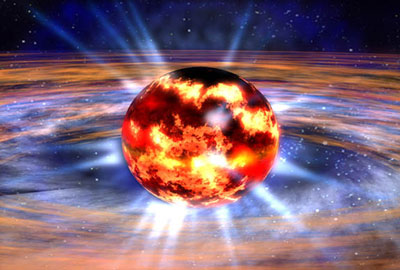 Scientists can learn a tremendous amount about neutron stars and quark stars without understanding their internal structure in detail, according to two Montana State University scientists.
Scientists can learn a tremendous amount about neutron stars and quark stars without understanding their internal structure in detail, according to two Montana State University scientists.
Jul 26th, 2013
Read more
This spring, humanity was shown its most detailed map of the early universe ever created. Generated by observations from the Planck spacecraft, the map revealed fluctuations in temperature in the relic radiation left over from the Big Bang - what we call the Cosmic Microwave Background (CMB). Recently, scientists on the Planck team announced finding certain large-scale features on the CMB sky that they cannot explain. One of them: a large cold spot, which corresponds to an anomalously large area of high density.
Jul 25th, 2013
Read more
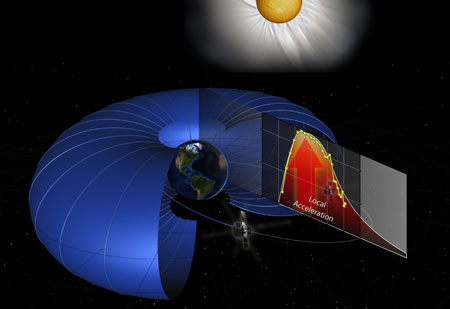 Using data from a NASA satellite, scientists have discovered a massive particle accelerator in the heart of one of the harshest regions of near-Earth space, a region of super-energetic, charged particles surrounding the globe and known as the Van Allen radiation belts.
Using data from a NASA satellite, scientists have discovered a massive particle accelerator in the heart of one of the harshest regions of near-Earth space, a region of super-energetic, charged particles surrounding the globe and known as the Van Allen radiation belts.
Jul 25th, 2013
Read more
 Using infrared data from the Subaru Telescope in Hawaii, an international team of astronomers has imaged a giant planet around the bright star GJ 504. Several times the mass of Jupiter and similar in size, the new world, dubbed GJ 504b, is the lowest-mass planet ever detected around a star like the sun using direct imaging techniques.
Using infrared data from the Subaru Telescope in Hawaii, an international team of astronomers has imaged a giant planet around the bright star GJ 504. Several times the mass of Jupiter and similar in size, the new world, dubbed GJ 504b, is the lowest-mass planet ever detected around a star like the sun using direct imaging techniques.
 Subscribe to our Space Exploration News feed
Subscribe to our Space Exploration News feed












